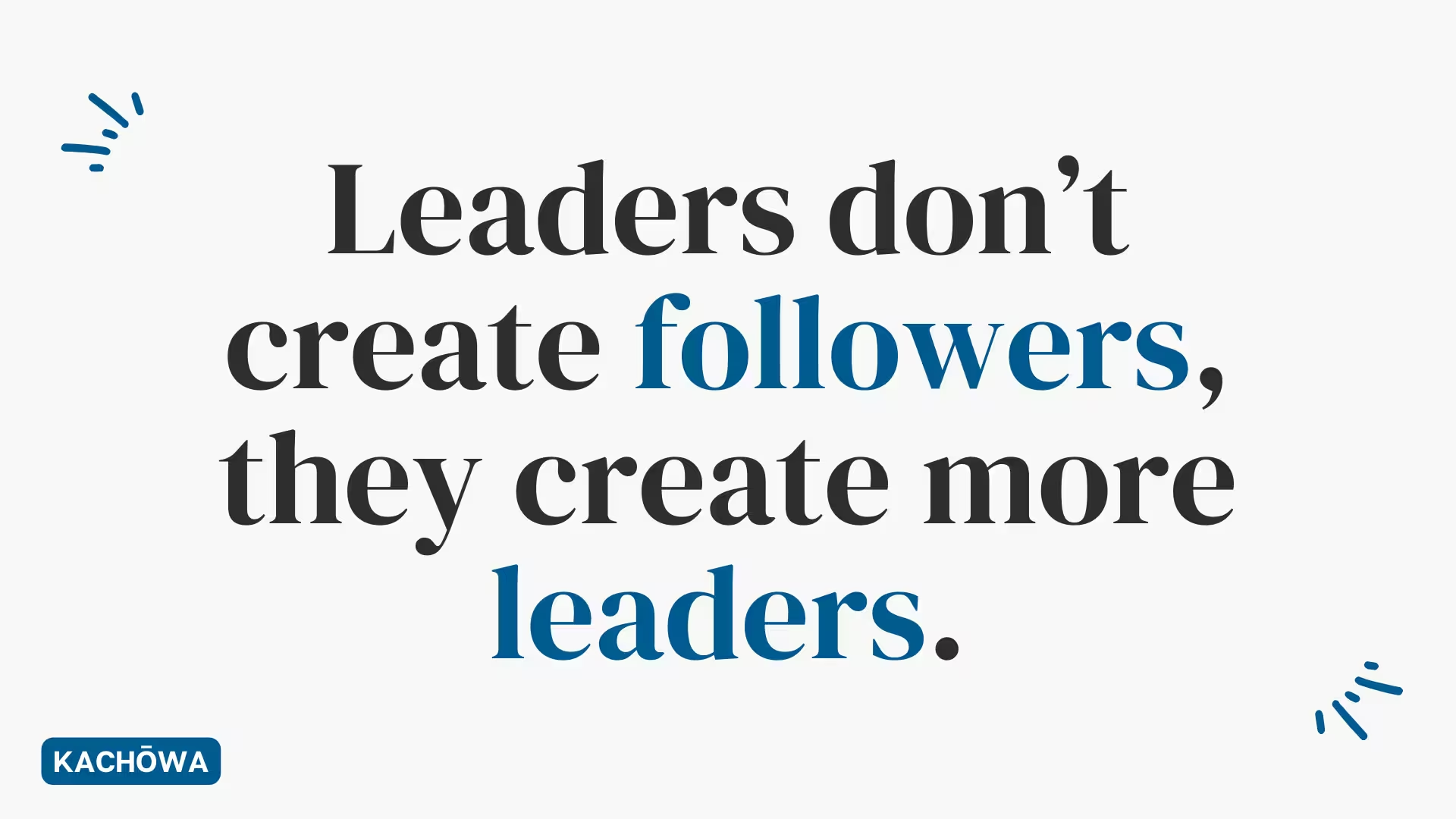
Cultivating Leaders: The Legacy of True Leadership
“Leaders don’t create followers, they create more leaders.” – Tom Peters
The mark of a great leader is their ability to develop others. Empower your team to take ownership, make decisions, and grow into leaders themselves. Leadership is about building a legacy that extends beyond your own capabilities.
The true measure of a leader is not the number of followers they amass, but the number of leaders they create. As Tom Peters aptly put it, “Leaders don’t create followers, they create more leaders.” This philosophy underscores the essence of effective leadership—empowering others to step into leadership roles and fostering a culture of growth and development.
The Role of Empowerment
Empowerment is at the heart of creating more leaders.
Great leaders understand that their success is intrinsically linked to the success of their team. By empowering team members to take ownership, make decisions, and drive initiatives, leaders cultivate an environment where individuals can thrive and grow into leaders themselves.
Developing Others
Developing others is a key responsibility of a leader.
This involves investing time and resources in mentoring, coaching, and providing opportunities for growth. Leaders must identify the strengths and potential in their team members and create pathways for them to develop these qualities. By doing so, they build a robust and resilient team capable of achieving extraordinary results.
Building a Legacy
True leadership is about building a legacy that extends beyond one’s own capabilities.
It is about creating a ripple effect where the impact of your leadership continues to resonate long after you have moved on. This legacy is built on the foundation of empowered individuals who are equipped to lead and inspire others, creating a cycle of continuous growth and development.
Fostering a Culture of Leadership
To create more leaders, it is essential to foster a culture that values and promotes leadership at all levels.
This involves encouraging innovation, rewarding initiative, and providing a supportive environment where individuals feel safe to take risks and learn from their experiences. A culture of leadership fosters collaboration, accountability, and a shared commitment to excellence.
Overcoming Challenges
The journey of creating more leaders is not without its challenges.
Leaders must be prepared to navigate resistance, manage conflicts, and overcome obstacles. However, by staying committed to the vision of empowering others, leaders can turn these challenges into opportunities for growth and development.
Conclusion
In conclusion, the mark of a great leader is their ability to develop others and create more leaders. By empowering their team, investing in their growth, and fostering a culture of leadership, leaders can build a lasting legacy that extends beyond their own capabilities. This approach not only enhances the effectiveness of the team but also creates a ripple effect of positive change and growth.




Leave a Reply